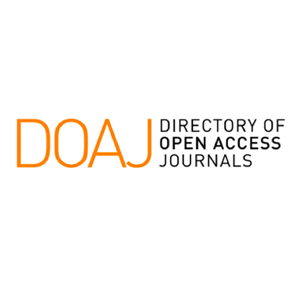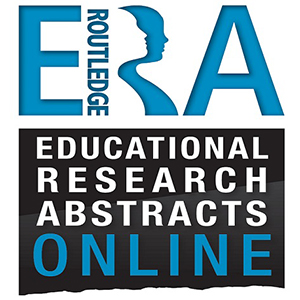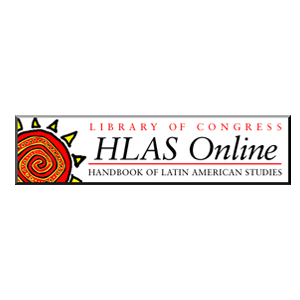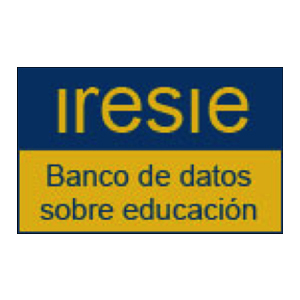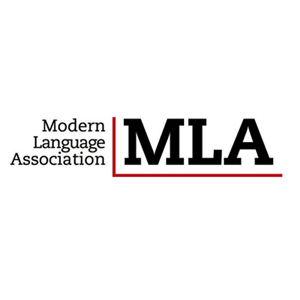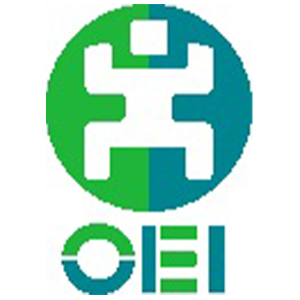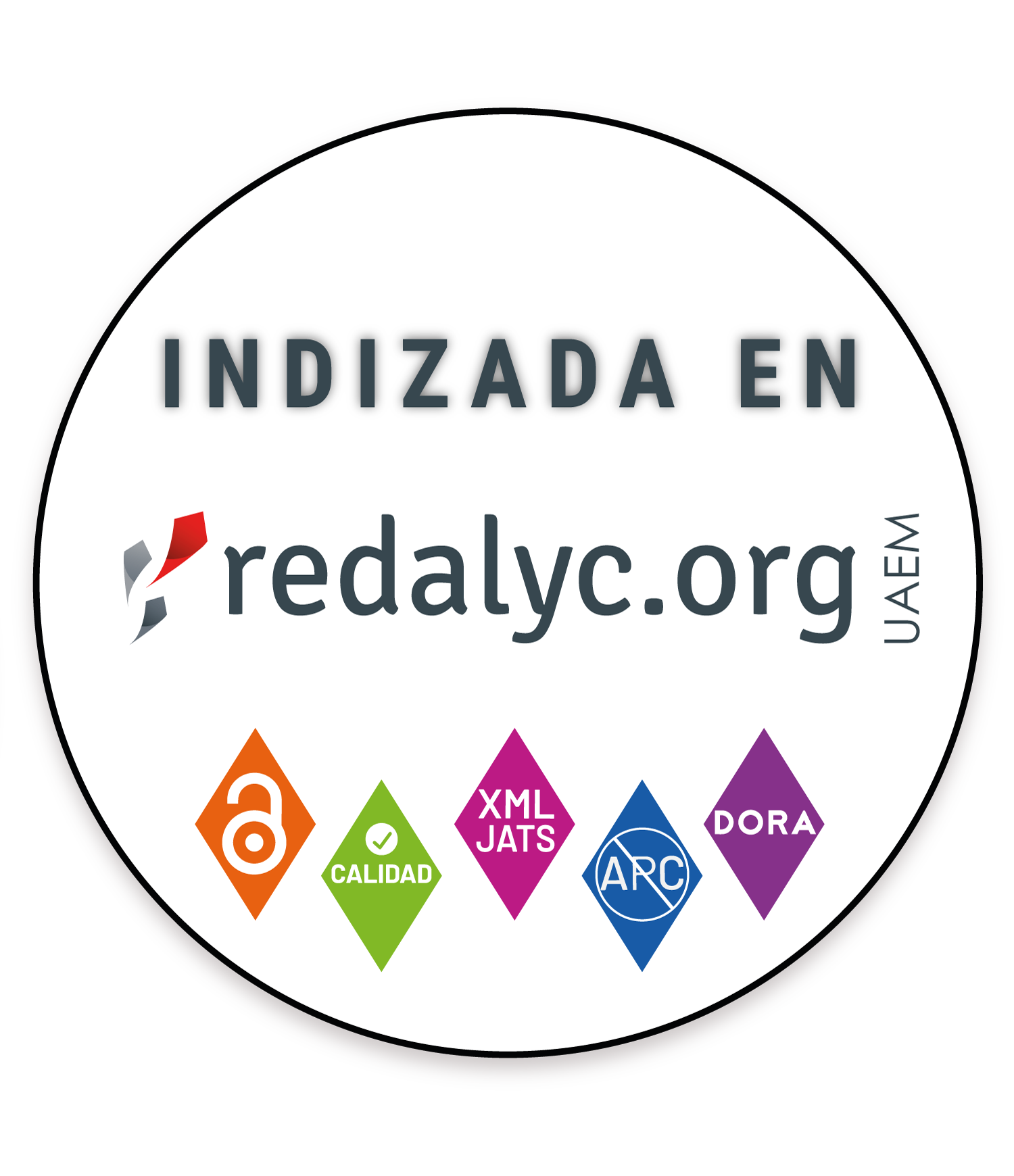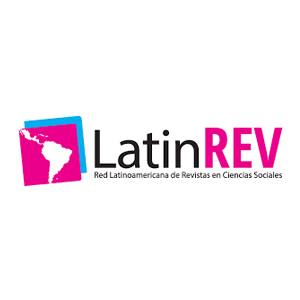Aprendizaje y educación temprana en México: un estudio de descomposición de factores 2012–2018
Learning and Early Education in Mexico: A Factor Decomposition Study 2012-2018
Aprendizagem e na educação infantil no México: um estudo de decomposição de fatores 2012–2018
El presente trabajo muestra la importancia de la educación temprana en México y la diferencia en el efecto de la educación preescolar sobre el rendimiento académico de los alumnos entre 2012 y 2018. Se identifica el sesgo de selección que existe entre asistir y no asistir a preescolar y se corrige (Heckman, 1979), permitiendo contar con estimadores insesgados y consistentes de los coeficientes asociados a factores que contribuyen a explicar el rendimiento académico. Usando los datos de pisa 2012 y 2018 para México, se identifican los efectos tratamiento ate, att y atu (efecto tratamiento promedio, efecto tratamiento promedio sobre los tratados, efecto tratamiento promedio sobre los no tratados) que permiten conocer la brecha en el rendimiento escolar de alumnos con preescolar y sin este. Finalmente, tomando el sesgo de selección de la muestra y basados en esto, se puede realizar una extensión a la descomposición Oaxaca-Blinder (1973), la cual, además de analizar el efecto dotación y producción en la brecha de rendimiento, permite agregar otro efecto, llamado “efecto sesgo de selección” (Mulligan y Rubinstein, 2008; Beblo et al., 2003; Dolton y Makepeace, 1986).
econometría, educación preescolar, brecha educativa, igualdad de oportunidades educativas, educación matemática (es)
econometria, educação préescolar, lacuna educacional, igualdade de oportunidades educacionais, educação matemática (pt)
Aizer, A., Eli, S., Ferrie, J. y Lleras-Muney, A. (2016). The long-run impact of cash transfers to poor families. The American Economic Review, 106(4), 935-971. https://doi.org/10.1257/aer.20140529
Almond, D. y Currie, J. (2011). Human capital development before age five. En O. Ashenfelter y D. Card (eds.), Handbook of labor economics (Vol. 4B, pp. 1315-1486). North Holland. https://doi.org/10.1016/S0169-7218(11)02413-0
Aos, S., Lieb, R., Mayfield, J., Miller, M. y Pennucci, A. (2004). Benefits and costs of prevention and early intervention programs for youth. Washington State Institute for Public Policy. ww.wsipp.wa.gov/ReportFile/
/Wsipp_Benefits-and-Costs-of-Prevention-and-Early-Intervention-Programs-for-Youth_Summary-Report.pdf
Barnett, S. W. (1985). Benefit-cost analysis of the Perry preschool and its policyimplications. American Educational Research Association, 7(4), 333-342.
Barnett, S. W. (1995). Long-term effects of early childhood programs on cognitiveand school outcomes. Future of Children, 5(3), 25-50.
Barnett, S. W. (2008). Preschool education and its lasting effects: Research and policy implications. Boulder and Tempe: Education and the Public Interest Center & Education Policy Research Unit. http://epicpolicy.org/publication/preschool-education
Beblo, M., Beninger, D., Heinze, A. y Laisney, F. (2003). Measuring selectivity-corrected gender wage gaps in the EU. Discussion Paper No. 03-74. https://madoc.bib.uni-mannheim.de/153/
Becker, G. (1964). Investment in human capital: A theoretical analysis. Journal of Political Economy, 70(5), 9-49.
Belfield, C. (2006). The promise of early childhood education. Paper presented at the Equity Symposium Teachers College New York. Symposium on thesocial costs of inadequate education.
Brooks-Gunn, J. (2003). Do you believe in magic?: What we can expect from Early Childhood Intervention Programs. Social Policy Report, 17(1), 3-14.
Caspi, A., Houts, R. M., Belsky, D. W., Harrington, H., Hogan, S., Ramrakha, S., Poulton, R. y Moffitt, T. E. (2016). Childhood forecasting of a small segment of the population with large economic burden. Nature Human Behaviour, 1(1), 1-10. https://doi.org/10.1038/s41562-016-0005
Center on the Developing Child at Harvard University. (2010). The foundations of lifelong health are built in early childhood. https://pediatrics.developingchild.harvard.edu/wp-content/uploads/2021/12/
Foundations-of-Lifelong-Health.pdf
Cortázar, A. (2015). Long-term effects of public early childhood education on academic achievement in Chile. Early Childhood Research Quarterly, 32, 13-22.
Cunha, F. y J. J. Heckman. (2007). The technology of skill formation. American Economic Review, 97(2), 31-47.
Cunha, F., Heckman, J. J. y Schennach, S. (2010). Estimating the technology of cognitive and noncognitive skill formation. Econometrica 78(3), 883-931. https://doi.org/10.3982/ECTA6551
Cunha, F., Heckman, J. J., Lochner, L. J. y Masterov, D. V. (2006). Interpreting the evidence on life cycle skill formation. In E. A. Hanushek y F. Welch (eds.), Handbook of the Economics of Education (pp. 697-
. North-Holland.
Dolton, P. J. y Makepeace, G. H. (1986). Sample selection and male-female earnings differentials in the graduate labour market. Oxford Economic Papers, 38(2), 317-341.
Drake, E. (2012). Reducing crime and criminal justice costs: Washington State’s evolving research approach. Justice Research and Policy, 14(1), 97-116. https://doi.org/10.3818/JRP.14.1.2012.97
Duncan, G. J. y Magnuson, K. (2013). Investing in preschool programs. Journal of Economic Perspectives, 27(2), 109-132. https://doi.org/10.1257/jep.27.2.109
Elango, S., García, J. L., Heckman, J. J. and Hojman, A. (2016) “4. Early Childhood Education”. Economics of Means-Tested Transfer Programs in the United States, Volume II, edited by Robert A. Moffitt, Chicago: University of Chicago Press, pp. 235-298. https://doi.org/10.7208/9780226392523-005
Felitti, V. J., Anda, R., Nordenberg, D., Williamson, D., Spitz, A., Edwards, V., Koss, M. y Marks, J. (1998). Relationship of childhood abuse and household dysfunction to many of the leading causes of death in adults: The Adverse Childhood Experiences (ace) Study. American Journal Preventive Medicine, 14(4), 245-258. https://doi.org/10.1016/S0749-3797(98)00017-8
Fergusson, D. M., Horwood, L. J. y Ridder, E. M. (2005). Show me the child at seven: The consequences of conduct problems in childhood for psychosocial functioning in adulthood. Journal of Child Psychology and Psychiatry and Allied Disciplines, 46(8), 837-849. https://doi.org/10.1111/j.1469-7610.2004.00387.x
García, J. L., Heckman, J. J., Leaf, D. E. y Prados, M. J. (2020). Quantifying the Life-Cycle Benefits of an Influential Early-Childhood Program. Journal of Political Economy, 128(7), 2502-2541.
Garrido-Yserte, R., Gallo-Rivera, M. T., y Martínez-Gautier, D. (2020). Más allá de las aulas: los determinantes del bajo rendimiento educativo en España y el fracaso de las políticas públicas. International Review of Economic Policy-Revista Internacional de Política Económica, 1(1), 86-106.
Heckman, J. J. (1979). Sample selection bias as a specification error. Econometrica, 47(1), 153-162. https://doi.org/10.2307/1912352.
Heckman, J. J. (2000). Invest in the very young. Working Paper. The Harris School, University of Chicago. http://www.ounceofprevention.org/user nav.php?EditID=44&Level=2
Heckman, J. J. (2006). Skill formation and the economics of investing in disadvantaged children. Science, 312(5782), 1900-1902. https://doi.org/10.1126/science.1128898
Heckman, J. J. (2007). The economics, technology, and neuroscience of human capability formation. Proceedings of the National Academy of Sciences, 104(33), 13250-13255. https://doi.org/10.1073/pnas.0701362104
Heckman, J. J. (2008). Schools, skills, and synapses. Economic Inquiry, 46(3), 289-324.
Heckman, J. J. y Corbin, C. O. (2016). Capabilities and skills. Journal of Human Development and Capabilities, 17(3), 342-359. https://doi.org/10.1080/19452829.2016.1200541
Heckman, J. J. y Karapakula, G. (2019). Intergenerational and intragenerational externalities of the Perry Preschool Project (N.º w25889). National Bureau of Economic Research.
Heckman, J. J. y Masterov, D. V. (2007). The productivity argument for investing in young children. Review of Agricultural Economics, 29(3), 446–493.
Heckman, J. J. y Mosso, S. (2014). The economics of human development and social mobility. Annual Review of Economics, 6(1), 689-733. https://doi.org/10.1146/annurev-economics-080213-040753
Heckman, J. J., Pinto, R. y Savelyev, P. (2013). Understanding the mechanisms through which an influential early childhood program boosted adult outcomes. American Economic Review, 103(6), 2052-2086.
https://doi.org/10.1257/aer.103.6.2052
Heckman, J. J., Moon, S., Pinto, R., Savelyev, P. y Yavitz, A. (2010). The rate of return to the high scope Perry Preschool Program. Journal of Public Economics, 94(1-2), 114-128. https://doi.org/10.1016/j.jpubeco.2009.11.001
Hoynes, H., Schanzenbach, D. y Almond, D. (2016). Long-run impacts of childhood access to the safety net. American Economic Review, 106(4), 903-934. https://doi.org/10.1257/aer.20130375
Jung, H. y Hasan, A. (2014). The impact of early childhood education on early achievement gaps: Evidence from the Indonesia Early Childhood Education and Development Project. Policy Research Working
Paper N.º 6794. World Bank. https://openknowledge.worldbank.org/handle/10986/18340
Karoly, L. A. (2012). Toward standardization of benefit-cost analysis of early childhood interventions. Journal of Benefit-Cost Analysis, 3(1), 1-43. https://doi.org/10.1515/2152-2812.1085
Knudsen, E., James, I., Heckman, J., Cameron, J. L. y Shonkoff, J. P. (2006). Economic, neurobiological and behavioral perspectives on building America’s future workforce. Proceedings of the National Academy of
Sciences, 103(27), 10155-10162.
Lee, S., Drake, E., Pennucci, A., Bjornstad, G. y Edovald, T. (2012). Economic evaluation of early childhood education in a policy context. Journal of Children’s Services, 7(1), 53-63. https://doi.org/10.1108/17466661211213670
Lucas, R. (1988). On the mechanism of economic development. Journal of Monetary Economics, 22(1), 3-42. https://papers.ssrn.com/sol3/papers.cfm?abstract_id=227120
Madala, G. (1983). Limited-dependent and qualitative variables in econometrics. Cambridge University Press. http://garfield.library.upenn.edu/classics1993/A1993LM25300001.pdf
Martínez Rizo, F., y Silva Guerrero, J. E. (2016). Impact of largescale assessment on Mexico’s education policies. Research Papers in Education, 31(5), 556-566. https://doi.org/10.1080/02671522.2016.1225352
Moreno, J. O. (2009). Educación compensatoria en las escuelas rurales e indígenas de México: un análisis impacto sobre diferencia en habilidades usando efectos de tratamiento. En J. N. Valero y M. de L. Treviño (eds.), La economía mexicana en 19 miradas (pp. 65-128). Universidad Autónoma de Nuevo León.
Moreno Treviño, J. O. y Cortez Soto, S. N. (2020). Rendimiento académico y habilidades de estudiantes en escuelas públicas y privadas: evidencia de los determinantes de las brechas en aprendizaje para México.
Revista de Economía, 37(95), 73-106. https://doi.org/10.33937/reveco.2020.148
Mulligan, C. B. y Rubinstein, Y. (2008). Selection, investment, and women’s relative wages over time. Quarterly Journal of Economics, 123(3), 1061-1110. https://doi.org/10.1162/qjec.2008.123.3.1061
Nelson, C. A. y Sheridan, M. A. (2011). Lessons from neuroscience research for understanding causal links between family and neighborhood characteristics and educational outcomes. En G. J. Duncan y
R. J. Murnane (eds.), Whither opportunity: Rising inequality, schools, and children’s life chances (pp. 27-46). Russell Sage.
Oaxaca, R. (1973). Male-female wage differentials in urban labor markets. International Economic Review, 14(3), 693-709. https://doi.org/10.2307/2525981
Organisation for Economic Co-operation and Development (oecd). (2009). Doing better for children. https://doi.org/10.1787/9789264059344-en
Organización para la Cooperación y el Desarrollo Económicos (ocde). (2010). Informe pisa 2009. https://www.oecd.org/pisa/pisaproducts/pisainfocus/PiF1_esp_revised.pdf
Organización para la Cooperación y el Desarrollo Económicos (ocde). (2013). Informe de resultados de pisa 2012. https://www.oecd.org/pisa/keyfindings/PISA-2012-results-mexico-ESP.pdf
Organización para la Cooperación y el Desarrollo Económicos (ocde). (2016). Programa para la evaluación internacional de alumnos (pisa): pisa 2015 Resultados México. https://www.oecd.org/pisa/PISA-
-Mexico-ESP.pdf
Phillips, D. A., Lipsey, M. W., Dodge, K. A., Haskins, R., Bassok, D., Burchinal, M. R., Duncan, G. J., Dynarski, M., Magnuson, K. A. y Weiland, C. (2017). Puzzling it out: The current state of scientific knowledge on pre-kindergarten effects a consensus statement. Brookings. https://www.brookings.edu/articles/puzzling-it-out-thecurrent-state-of-scientific-knowledge-on-pre-kindergarten-effects/
Poulton, R., Caspi,A., Milne, B. J., Thomson,W. M., Taylor, A., Sears,M. R. y Moffitt, T. E. (2002). Association between children’s experience of socioeconomic disadvantage and adult health: A life-course study.Lancet, 360(9346), 1640-1645. https://doi.org/10.1016/S0140-6736(02)11602-3
Psacharopoulos, G. y Woodhall, M. (2017). Educación para el desarrollo. Un análisis de opciones de inversión. Universidad de Sevilla.
Rea, D. y Burton, T. (2019). New evidence on the Heckman curve. Journal of Economic Surveys, 34(2), 241-262. https://doi.org/10.1111/joes.12353
Sammons, P., Sylva, K., Taggart, B., Melhuish, E. y Siraj-Blatchford, I. (2014). Las influencias del hogar, el pre-escolar y la escuela primaria sobre el rendimiento educativo a los once años del niño. Archivos
Analíticos de Políticas Educativas, 22, 1-23. https://www.redalyc.org/articulo.oa?id=275031898113
Schultz, T. (1961). Investment in human capital. American Economic Review, 51(1), 1-17.
Singh, A. (2013). Test score gaps between private and government sector students at school entry age in India. Oxford Review of Education, 40(1), 30-49.
Shonkoff, J. P. y Phillips, D. A. (eds.). (2000). From neurons to neighborhoods: Thescience of early child development. National Academy Press.
Valdés Pasarón, S., Ocegueda Hernández, J. M. y Romero Gómez, A. (2018). La calidad de la educación y su relación con los niveles de crecimiento económico en México. Economía y Desarrollo, 159(1), 61-79. http://scielo.sld.cu/scielo.php?script=sci_arttext&pid=S0252-85842018000100005&lng=es&tlng=es.
Willis, R. y Rosen, S. (1979). Education and self-selection. Journal of Political Economics, 87(5), S7-S36.
APA
ACM
ACS
ABNT
Chicago
Harvard
IEEE
MLA
Turabian
Vancouver
Descargar cita
Citaciones

Métricas PlumX
Visitas
Descargas
Licencia
Derechos de autor 2023 Revista Colombiana de Educación

Esta obra está bajo una licencia internacional Creative Commons Atribución-NoComercial 4.0.
Todo el trabajo debe ser original e inédito. La presentación de un artículo para publicación implica que el autor ha dado su consentimiento para que el artículo se reproduzca en cualquier momento y en cualquier forma que la Revista Colombiana de Educación considere apropiada. Los artículos son responsabilidad exclusiva de los autores y no necesariamente representan la opinión de la revista, ni de su editor. La recepción de un artículo no implicará ningún compromiso de la Revista Colombiana de Educación para su publicación. Sin embargo, de ser aceptado los autores cederán sus derechos patrimoniales a la Universidad Pedagógica Nacional para los fines pertinentes de reproducción, edición, distribución, exhibición y comunicación en Colombia y fuera de este país por medios impresos, electrónicos, CD ROM, Internet o cualquier otro medio conocido o por conocer. Los asuntos legales que puedan surgir luego de la publicación de los materiales en la revista son responsabilidad total de los autores. Cualquier artículo de esta revista se puede usar y citar siempre que se haga referencia a él correctamente.











